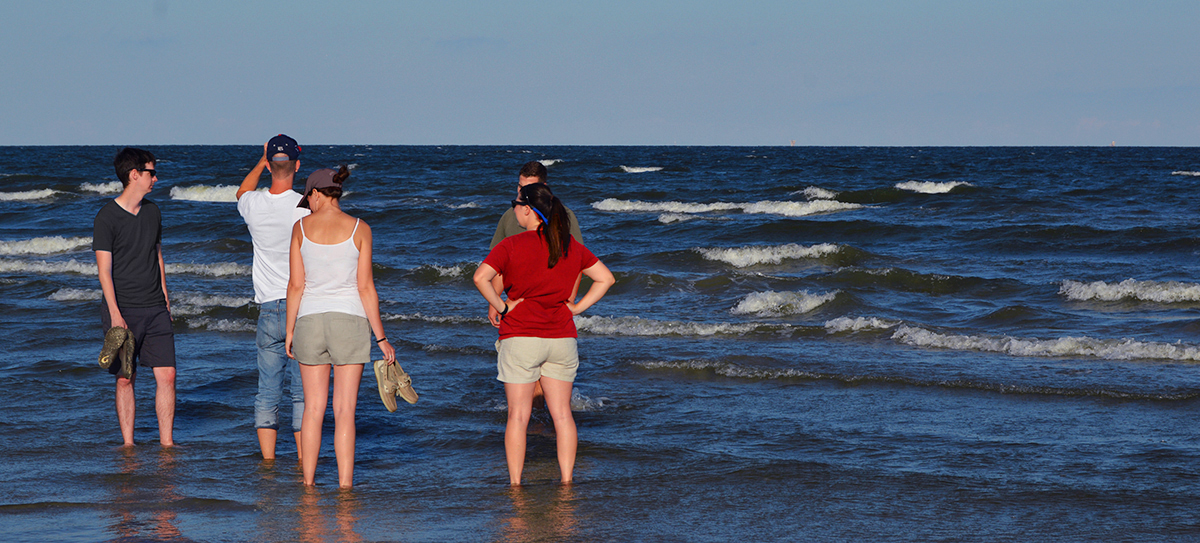
INHABIT
Summer 2017 | Galveston Island State Park | Galveston Island TX
Project Team: Andrea Becker, Andre Boudreaux, Brooke Burnside, Avignon Greene, Rebecca Kennedy, Whitney Moore, Hugo Reynolds, Sean Reynolds, Joey Rocha, Ui Jun Song, Anthony Vannette
Teaching Assistant, Patrick Schoonover
Thanks to Sarah Gamble, Michael Garrison, Nicole Joslin, Thom Wolfe and Tom Forney of Forney Construction for their generosity and expertise.
Watch TPWD’s documentary for Texas PBS Television Each summer the Gulf Coast DesignLab hosts the summer Public Interest Design studio at the University of Texas at Austin School of Architecture. This advanced design studio is a concentrated, ten-week, interdisciplinary summer studio resulting in a built project designed by the students. Supported by a five-week seminar on community design engagement methodologies, taught by Nicole Joslin, participating students undertake field-based research, individual and collaborative design, and construction of an approved project. In 2017, the studio partnered again with Texas Parks and Wildlife Department to design and build a shade structure at Galveston Island State Park for Lisa Reznick, the park’s environmental educator.
Just south of Houston connecting the ocean and bay, Galveston Island State Park is one of the most visited parks in the state. Each year thousands of visitors take day trips to the beach and bay side of the park,(video showing finished project). The shade structure will be used by the environmental educator focusing on middle and high schools in the region—many from low-income and inner-city neighborhoods—who take field trips as part of their science curriculum. These students will use the shade pavilion for an orientation talk before they begin a bay walk. It is expected that two to three groups of students per week, about thirty-five students each, will use the built facility through the spring, winter, and fall when middle and high school is typically in session. And in the summer, the park offers bay walks and talks on Saturdays and Sundays when the pavilion will also be utilized by the public at large. The shade pavilion is expected to serve between three and four thousand students and park visitors throughout the year.
The four-hundred and fifty square foot structure, sits on the bay’s edge nestled between eighteen-foot-high yaupon holly sculpted by southwest winds. A short walk along an informal path from the parking through the hollies leads to the shade structure. Part of the design includes a gabion wall filled with recycled concrete. Using a recycled material provides the opportunity for the environmental educator to talk about the importance of recycling for everyone. The wall acts to protect visitors from afternoon sun while offering a greater sense of enclosure on the wood deck overlooking the bay. The students designed parts of the wall with small-sized slots and tubes to accommodate native lizards, pollinators, and other tiny creatures typical in this coastal environment. This inhabited feature of the wall can be used by the environmental educator as a living example to help describe the Gulf Coast’s interdependent flora and fauna. Tightly spaced wood roof members are angled at forty-five degrees to maximize full shade throughout the summer. A similar wood screen serves the same purpose by protecting guests from the southern sun.
Association of Collegiate Schools of Architecture (ACSA) recognized INHABIT by awarding it a Distinguished Design Build Award for 2018-19
ArchDaily named this project as one of its Nine Best Student Design-Build Projects Worldwide in 2017
The City of Galveston recognized this project with a Design & Planning Award for 2019
Ft Worth AIA recognized INHABIT with a student Merit Design Award for 2019